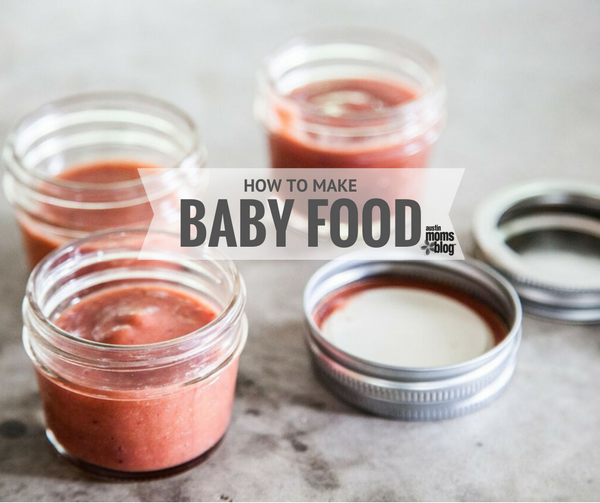
Ah, baby food. It is curious how something so simple has become so complex. I’ve seen many highly judgmental mom-debates on Facebook about when to start feeding babies food, what to feed them, and how baby food should be prepared.
Food is such a sensitive topic for many mothers and it is no wonder. In my house, I am responsible for making the shopping list, going to the store or farmers’ market, selecting what we’ll eat for the week, and preparing the meals. If I don’t do this or if I plan poorly, we often end up spending beyond our budget eating out.
There have been the days when I’ve had to fret and scrape together change to buy a gallon of milk. And, to complicate matters, I’ve gone through periods of my life where I dieted, rewarded myself with food, and developed unhealthy patterns around eating. On the flip side of that, I’ve also shared many a meal with those I most love, enjoying the delightful flavors on my plate. So, it isn’t surprising that when it comes to the first flavors for babies, moms would be quick to debate. Of course, we all want the best for our kids but what does that mean in reality? Like all parenting issues, I think it looks different for different families.
When I went for my daughter’s four-month well-check, our pediatrician (one who I respected and liked very much) told us we could start introducing solids. I was surprised that we were ready so soon but I didn’t question it. This is a topic of contention among moms but the American Academy of Pediatrics says that babies may begin eating food between four to six months depending on developmental milestones reached. However, some research indicates that starting foods closer to six months – especially for breastfed babies – results in better health outcomes.
I asked my pediatrician about what we should feed our baby, but there was little information other than a few things not to feed her (i.e. honey, cow’s milk, choking hazards). Surprisingly, the United States doesn’t have any standard nutrition guidelines for children under two (although the USDA is working on it now).
So, I asked my mom friends for advice and did a little research and found a rice cereal that I liked for my daughter’s first foray into eating. I knew I wanted to make her baby food but I had been told that rice cereal was a good way to start and the brand I bought was better than most because it added vitamins and probiotics to the mix. While this was a fine first food, if I had it to do again, I would start with vegetables. Several days after we started with the rice cereal we did switch to veggies.
I was ridiculously excited. For months, I’d stashed away the baby food maker that I’d received at my baby shower. Now, I was able to get it out and examine all the tiny parts and the book that accompanied it. When we went to the farmers’ market, I began to survey the veggies that might make good first foods. I made purees for my baby for many months and it was wonderful for our family. However, I know that some babies don’t love purees and instead prefer small soft foods that they can pick up and feed themselves – a feeding style called Baby-led Weaning. If you are going that route, I’d suggest you do some reading about it. You might check out the book Baby-Led Weaning by Gill Rapley as it is a great resource.

If you’d like to make your own baby food purees, here is a how-to guide to get you started:
Step 1:
Look for age-appropriate vegetables and fruits. It is great to start with vegetables like sweet potatoes, peas, or summer squash. (More ideas and recipes here.) Get some fresh air and select veggies grown with love at your local farmers’ markets. Remember that you should only introduce one food at a time when you are starting out. Offer it 3-5 times before introducing another new food, allowing you to pinpoint allergens, if any arise. If you have concerns, contact your doctor immediately.
Step 2:
Cook veggies until soft. It will always be best to steam veggies where possible. Steaming allows more of the nutrients to remain intact. Some foods may need to be baked or boiled though. You want all veggies to be soft enough to become a smooth puree.
Step 3:
Choose your liquid. You will likely need some liquid when processing your food. When babies are very young, it is a great idea to include some breastmilk or formula as the liquid. This provides a taste that is familiar for babies. Remember: if you are using frozen breastmilk, do not refreeze the food you are making as breastmilk should never be re-frozen.
Step 4:
Puree. I always tell new moms that you don’t have to use a fancy baby food maker in order to make baby food. They can be nice but are mostly unnecessary. Use what you have. A blender, food processor or even a potato masher will work. Put the cooked food and liquid in the blender or food processor bowl and puree until smooth enough for your baby to eat safely. Food can become chunkier as your baby develops.

Step 5:
Feed your baby! If this is the first time, make sure you have your camera ready. Baby reactions to new foods are my favorite!









